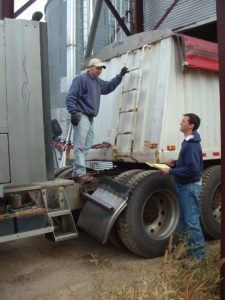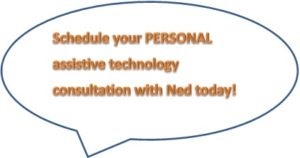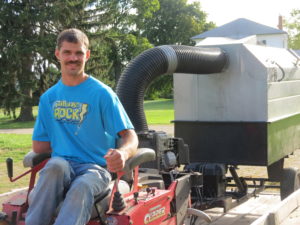Ned Stoller performs Assistive Technology Assessments for DisabilityWorkTools.com. He is a certified Assistive Technology Professional (ATP) with a degree in Agricultural Engineering from Purdue University. He has 14 years’ experience performing job-site assistive technology assessments for tradesmen and hands-on workers. Perhaps his greatest credential is the fact that Ned has worked in hands-on tradesman-type jobs for 25 years. He understands how tools are used, the required physical activities of various trades, and the harsh environments workers are faced with while doing their jobs.
Assistive technology assessments help individual workers determine which assistive technologies and strategies will improve their functioning on the job in spite of a disabling condition. Ned assesses: a) the required activities to successfully perform a job, b) the human factors of the worker, and c) the environment in which the work will be done. Without an assistive technology assessment, a worker and his employer will not be aware of the many ways to make a tradesman’s worksite accessible to a person with a disability.
First, the essential activities need to be identified on the worksite. This will be determined by a tour of the area with both the worker and the supervisor. Tasks will be demonstrated, forces will be measured and range of motion defined. The importance of each activity will be discussed in relation to its frequency, replaceability, tradability, financial significance to the business, and other factors. The highest priority activities will then be broken down into step-by-step motions or tasks.
The human factors of the worker will be considered for each activity. An interview with the  worker will discuss strength, range of motion, cognitive ability and emotional connection to an activity. Clinical measurements of such factors are best determined by an occupational therapist before the assistive technology assessment. The ATP may have a copy of the functional capacity assessment; however, the conversation at the workplace with the worker is necessary to fully understand how the human factors impact the highest priority activities.
worker will discuss strength, range of motion, cognitive ability and emotional connection to an activity. Clinical measurements of such factors are best determined by an occupational therapist before the assistive technology assessment. The ATP may have a copy of the functional capacity assessment; however, the conversation at the workplace with the worker is necessary to fully understand how the human factors impact the highest priority activities.
 Finally, the environment of the work site needs to be understood. Are there extreme temperatures, wind, loud equipment, peer pressure from other workers to perform at a certain rate, a culture of criticism or patience, religious factors, and other aspects of the environment. The environment will have an impact on both the worker’s abilities, and on how the assistive technology functions. High tech electronics may not be well suited to humid or wet work environments, for example.
Finally, the environment of the work site needs to be understood. Are there extreme temperatures, wind, loud equipment, peer pressure from other workers to perform at a certain rate, a culture of criticism or patience, religious factors, and other aspects of the environment. The environment will have an impact on both the worker’s abilities, and on how the assistive technology functions. High tech electronics may not be well suited to humid or wet work environments, for example.
When the assessment of activities, human factors, and work environment is complete, Ned summarizes the information in a report recommending suitable assistive technology solutions. The worker, employer, and funding groups can use the report to determine how to proceed with making the work site accessible. It is important to have an Assistive Technology Professional who is familiar with skilled-trades worksites to ensure the recommended assistive technology solutions are practical. When all aspects of the worksite are considered, the assistive technology assessment will improve the worker’s functioning on the job in spite of a disabling condition.
